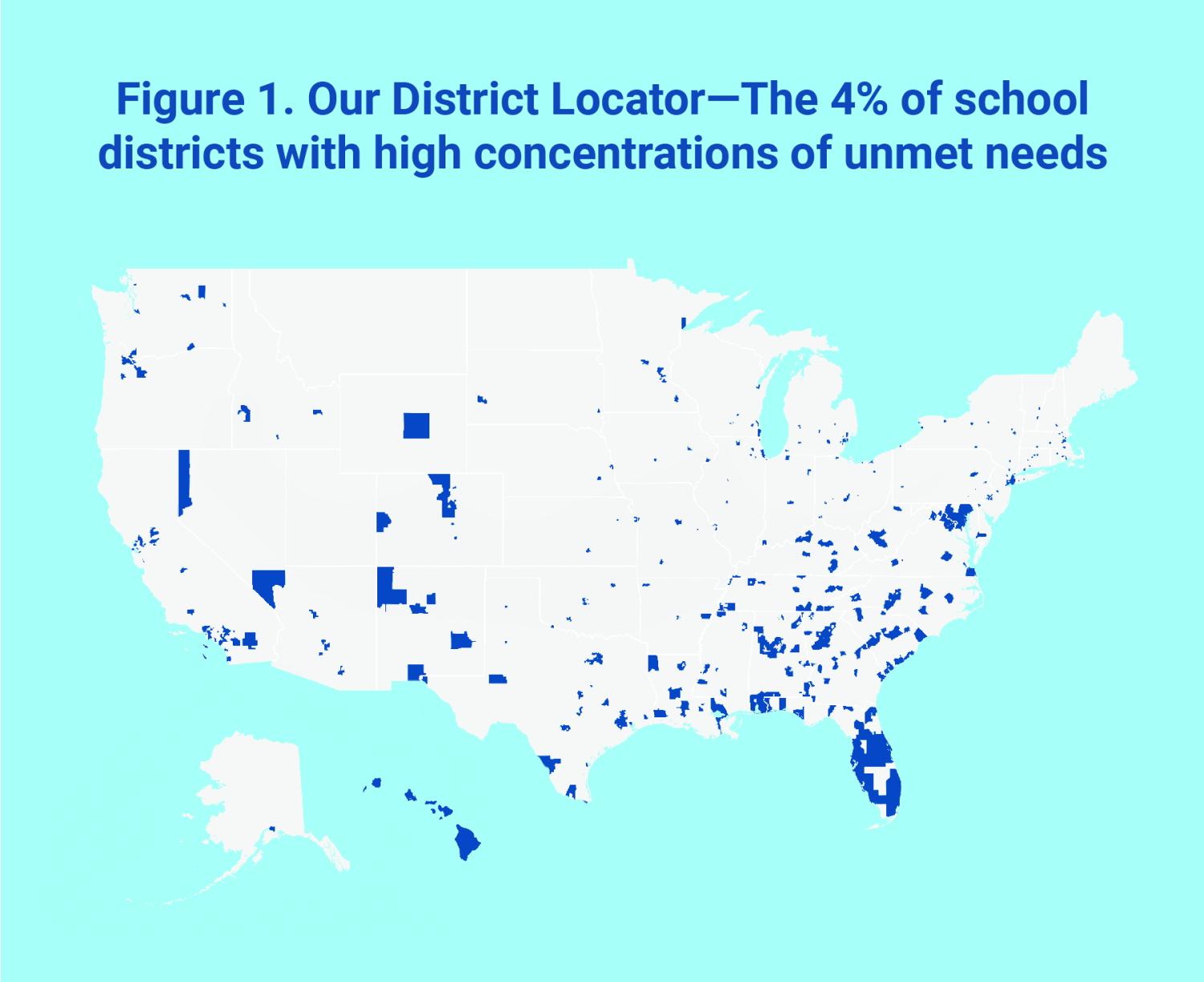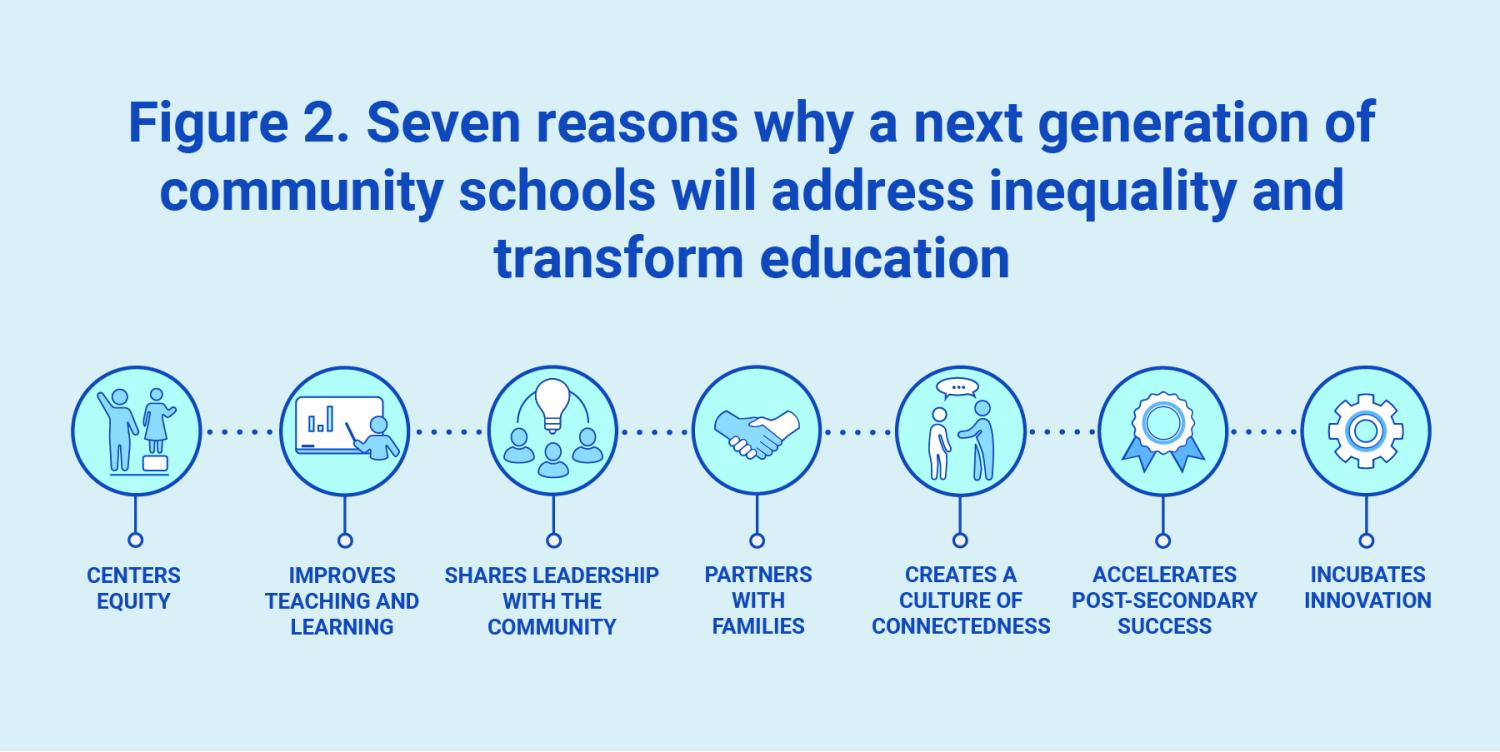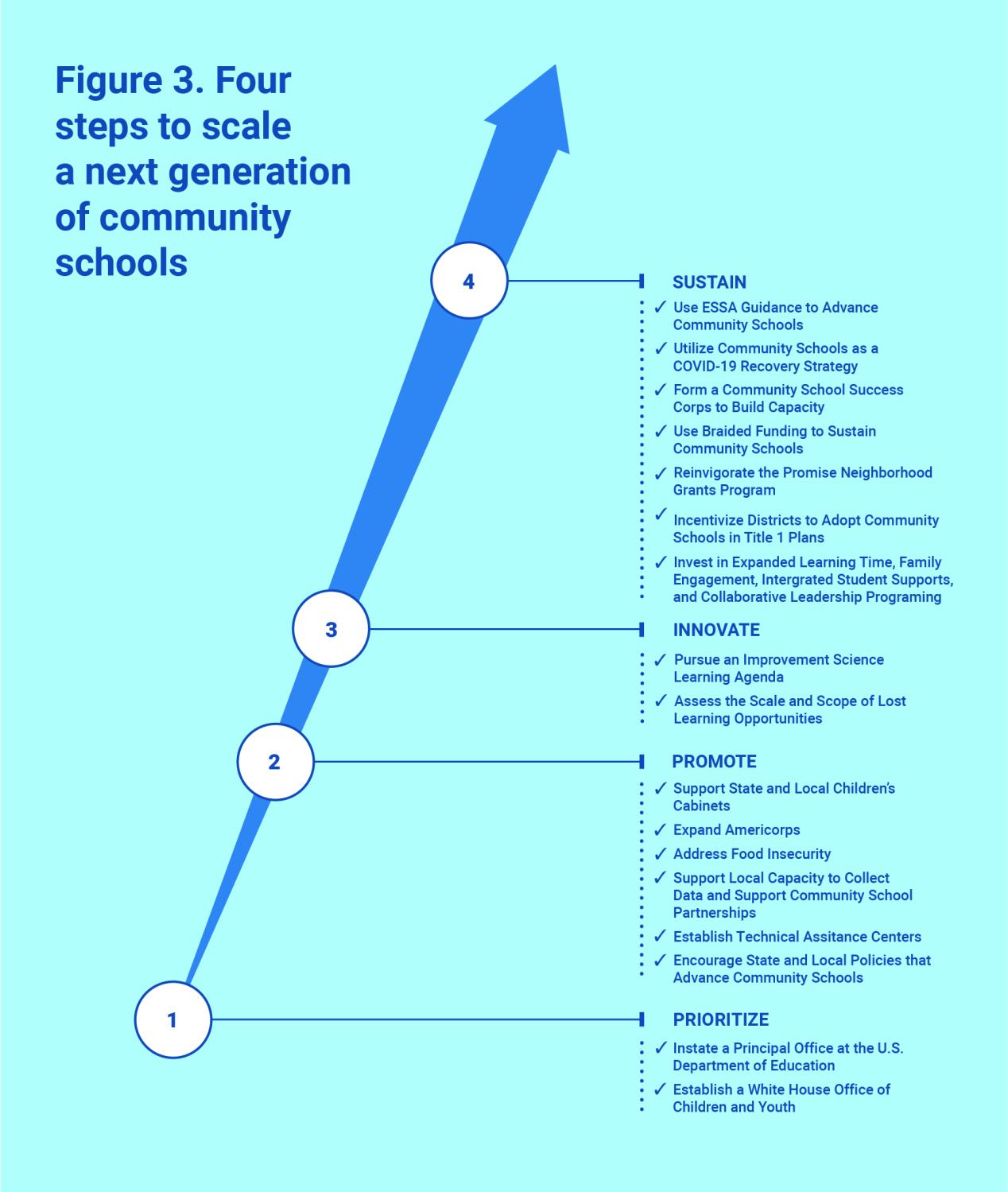This report was written by the Brookings Institution’s Task Force on Next Generation Community Schools.
During few times in our country’s history has leadership in education been more critical. Far too many communities continue to face the enduring impacts of systematic racism and generational poverty. Our nation’s schools have also been impacted by COVID-19 and, for many, the effects are staggering and could last for years. At the same time, as the pandemic shuttered school doors across the country, numerous education allies rose to the occasion—from families to community nonprofits to employers to media companies. As argued in the Brookings report “Beyond reopening schools: How education can emerge stronger than before COVID-19,” public support for the central role schools play in community life has never been higher.
Taken altogether, this situation presents a series of linked challenges, as well as what may be a once-in-a-century opportunity to reimagine school in ways that nurture the gifts and talents of every child and family. By seizing the moment, we can lay the foundation for a new way of schooling that our nation needs—one that is flexible, customized to local needs and equitable, and that brings together educators, communities, and families to support every student every day. This will require an immediate investment in the scaling of a proven solution that addresses educational inequities and leapfrogs our school system toward a new way of teaching and learning that honors local assets and helps students develop the competencies and skills they need to thrive in work, life, and citizenship.
Community schools integrate, rather than silo, the services that children and families need, thus ensuring that funding for health, mental health, expanded learning time, and social services is well spent and effective.
We, the Brookings Institution’s Task Force on Next Generation Community Schools, recommend the transformation of U.S. schools into community schools—centering initial efforts on the 4 percent of school districts that educate approximately 40 percent of the country’s children, include urban and rural communities across the nation, and have the greatest concentration of unmet student needs (see Figure 1). Community schools integrate, rather than silo, the services that children and families need, thus ensuring that funding for health, mental health, expanded learning time, and social services is well spent and effective.

By taking this approach of progressive universalism, the mayors, states, and the federal government would rapidly reach the greatest numbers of students and families most in need of support today and create a critical mass of schools that embody a powerful and community-informed educational approach that closes the equity gap and lays the foundation for 21st century teaching and learning.
What are community schools?
According to the Coalition for Community Schools, a community school is “both a place and a set of partnerships between the school and other community resources. Its integrated focus on academics, health and social services, youth and community development, and community engagement leads to improved student learning, stronger families, and healthier communities.” In community schools, every family and community member is a partner in the effort to build on students’ strengths, engage them as learners, and enable them to reach their full potential. Although community schools look a little different in each community, research indicates that four core pillars of work drive improved student outcomes:
- Expanded and enriched learning time. This includes after-school and summer programs, as well as enriching the curriculum through culturally relevant, real-world learning opportunities.
- Active family and community engagement. This includes both service provision and meaningful partnership with students, families, and community members in which families and communities support children’s learning through leadership and decisionmaking roles in the school.
- Collaborative leadership and practices. This includes the coordination of community school services, as well as site-based, cross-stakeholder leadership teams, teacher learning communities, and the ongoing sharing and use of early warning data to drive continuous improvement in support of students and their families.
- Integrated student supports. This includes supports such as mental and physical health care, nutrition support, and housing assistance, which are often provided through strategic community partnerships.
The synergy and interaction among the four pillars create the necessary conditions for a robust learning environment for students within and beyond the classroom.
7 reasons why a next generation of community schools can address education inequality and lay the foundation for 21st century teaching and learning

1. Community schools serve as an equity strategy. A growing body of evidence shows that community schools increase equitable access to resources and whole child supports that create the conditions for learning and healthy development for all children, including students of color, English language learners, students from low-income families, and students with disabilities.
2. Community schools improve teaching and learning. Community schools actively engage students as learners by blurring the lines between school and community and by offering rigorous, project-based curricula and culturally responsive pedagogy that connect to students’ lived experiences.
3. Community schools are community driven. A predominant feature of the country’s most mature and effective community schools initiatives is that they value and embrace community knowledge and assets and have been launched and sustained through authentic collaboration and shared leadership across school districts, students, families, and community-based organizations.
4. Community schools partner with students and families. A growing body of evidence indicates the benefits of family engagement and leadership in driving student academic outcomes. Schools that have developed trusting relationships with families and provided leadership training, family networking and mentoring opportunities, and information on the education system and how to navigate it experience improved student attendance, achievement, graduation rates, and engagement in post-secondary education.
5. Community schools create a culture of connectedness. Evidence indicates that being connected to school is the strongest universal prevention strategy that we have as a society to help young people stay and succeed in school. A culture of connection in school leads not only to better attendance, grades, test scores, high school graduation rates, and post-secondary success, but also to better physical and mental health, fewer suicides, less depression, reductions in teenage pregnancies, and reduced involvement with the juvenile justice system.
6. Community schools serve as “post-secondary success accelerators.” Research indicates the benefits of supporting students with college and career readiness activities. To set students up for future success, community schools have provided college and career development exposure that has led to positive student outcomes both before and during the pandemic.
7. Community schools are incubators of innovation. Community schools are laboratories of learning and have been well suited to spreading innovations developed by schools and community partners. Important to this are the data-informed collaborative structures that community schools have in place.
4 recommendations to scale next generation community schools nationally
The conditions for scaling exist with a diverse array of organizations dedicated to advancing next generation community schools, including the Coalition for Community Schools, teachers’ unions, parent organizations, advocacy groups, and state and local coalitions, as well as expanded learning providers, higher education institutions, not-for-profit organizations (e.g., Communities In Schools), charter school networks, and capacity-building intermediaries. And the time to scale is now. As such, the four steps below provide a blueprint for scaling a next generation of community schools that can be used by federal, state, and local level policymakers.

STEP 1: Prioritize
The U.S. administration should take the following immediate executive actions to galvanize key stakeholders at the federal, state and local levels to scale the community schools approach to at least half of the 4 percent of school districts with greatest unmet need:
A) Reinstate a principal office. Reinstate a principal office—with senior political leadership—at the U.S. Department of Education focused on supporting the whole child.
B) Establish a White House Office of Children and Youth. Establish a White House Office of Children and Youth that will organize cross-departmental and interagency efforts, including to ensure rapid recovery from COVID-19, address longstanding impacts of structural inequality and systematic racism, and advance opportunity.
STEP 2: Promote
Promote policies and high-quality capacity building that result in broader, effective implementation of the community schools strategy:
A) Support children’s cabinets. Support expansion and enhancement for state and local level children’s cabinets that facilitate the integration and coordination of cross-sector resources for whole-child supports.
B) Expand AmeriCorps. Expand AmeriCorps to meet the social, emotional, and academic needs of students, particularly those in the 466 school districts most adversely impacted by COVID-19.
C) Address food insecurity. Address food insecurity to support students’ engagement in learning.
D) Support local capacity. Build capacity within the U.S. Department of Education to support local educational agencies (LEAs) and state education agencies (SEAs), as well as their governmental (e.g., Department of Health) and nongovernmental (e.g., community nonprofits) partners, to strengthen community school partnerships through high-quality technical assistance.
E) Establish technical assistance centers. Establish next generation community school national and regional technical assistance centers to build the professional capacity of community school leaders and to create national peer-learning communities, with a focus on the 4 percent of school districts most affected by the hardships of COVID-19.
F) Develop state and local policies. Develop state and local level community school policies and regulations that enable the advancement of robust community school initiatives through financial, implementation, and technical support.
STEP 3: Innovate
Pursue a robust research agenda that examines the impact of next generation of community schools on educational outcomes:
A) Invest in an improvement science learning agenda. Make community schools a priority area for a rapid-cycle learning agenda and a 10-year improvement science research and development effort, as well as a focus area for Institute of Educational Science (IES) and Education and Innovation (EIR) grants.
B) Assess lost learning. Assess the scale and scope of lost learning opportunities.
STEP 4: Sustain
Repurpose and provide funding to initiate and sustain systemic scaling of a next generation of community schools.
A) Use ESSA guidance and regulations. Within the Department of Education, use Every Student Succeeds Act (ESSA) guidance and regulations to advance a next generation of community schools.
B) Utilize community schools for COVID-19 recovery. Utilize community schools as a critical COVID-19 recovery strategy and an eligible use of federal COVID-19 relief dollars.
C) Form a community school success corps. Form a Community School Success Corps (CSSC) to provide diverse teams of critical additional “people-powered” support and infrastructure to expand community schools with the capacity needed to provide holistic, personalized support to positively impact students, families, and communities across the country.
D) Support children and youth. Direct the U.S. Department of Education to work with other departments that support children and youth to reduce barriers associated with braiding and blending funding from multiple federal departments, agencies, and programs that support community schools.
E) Reinvigorate and expand the Promise Neighborhood Grants Program. Center the promise neighborhood grants program around the community school strategy and focus funding on the 4 percent of school districts most impacted by COVID-19, as a way to activate and connect local community resources to invigorate building back better.
F) Include community schools in Title 1 plans. Create incentives for local school districts most affected by the pandemic and use the community school strategy as part of their Title I plans.
G) Increase federal funding. Ensure robust support for the federal funding streams that support community schools.





